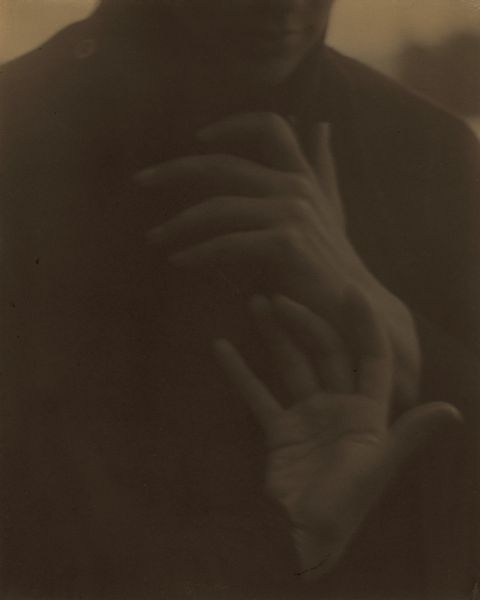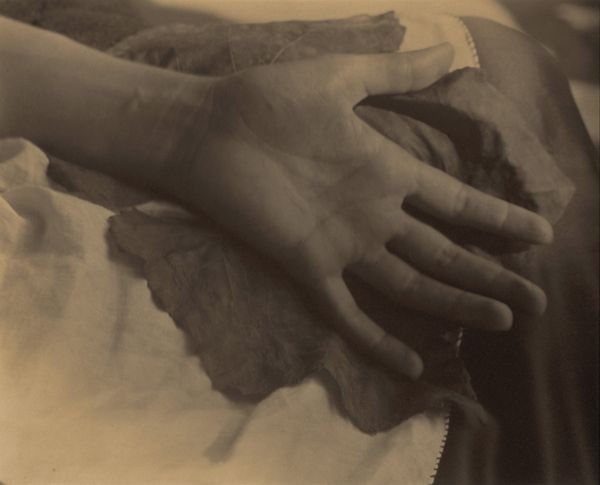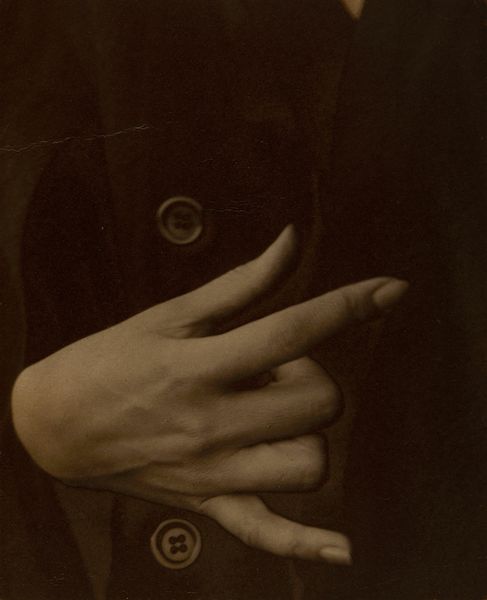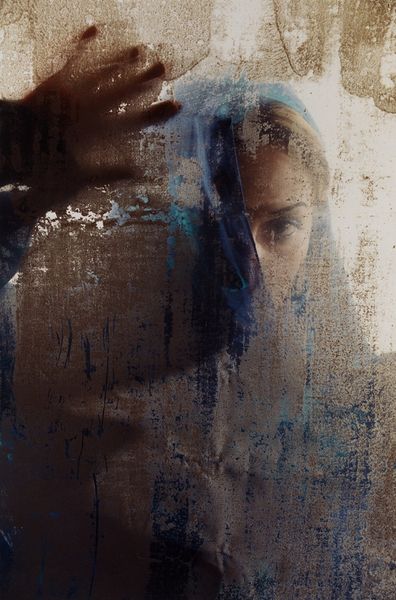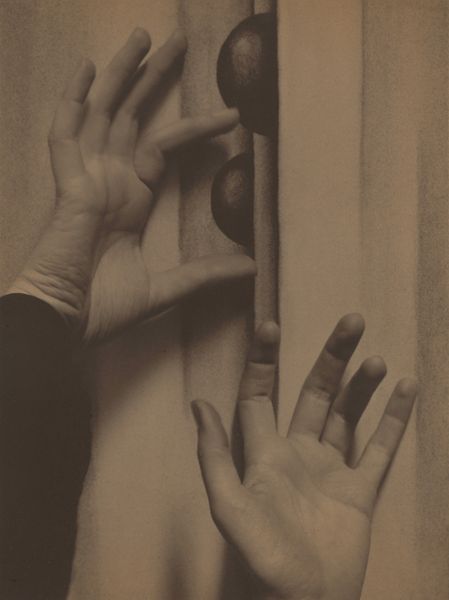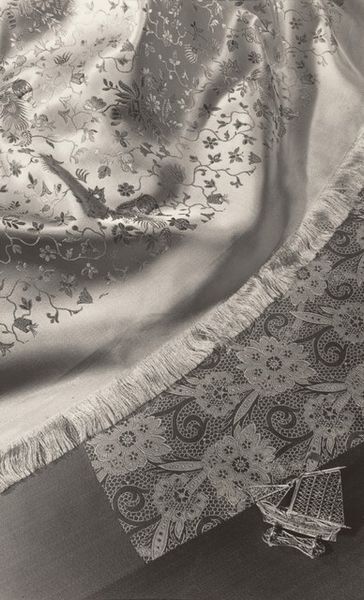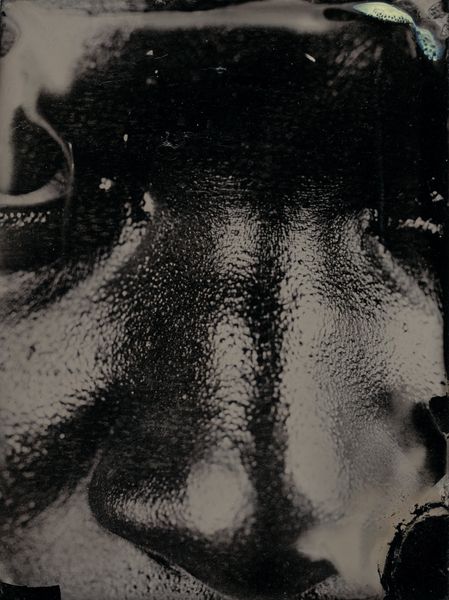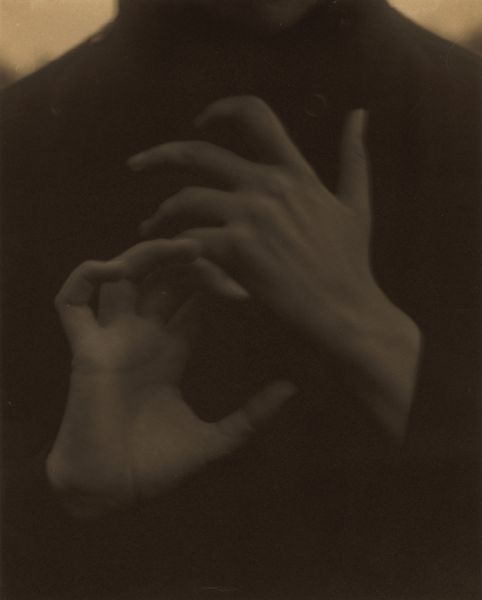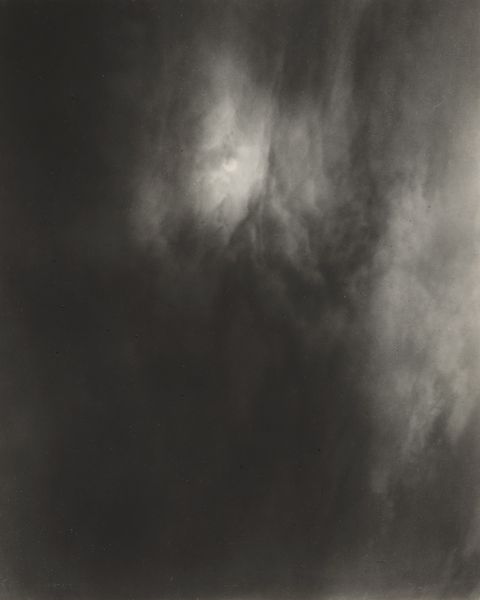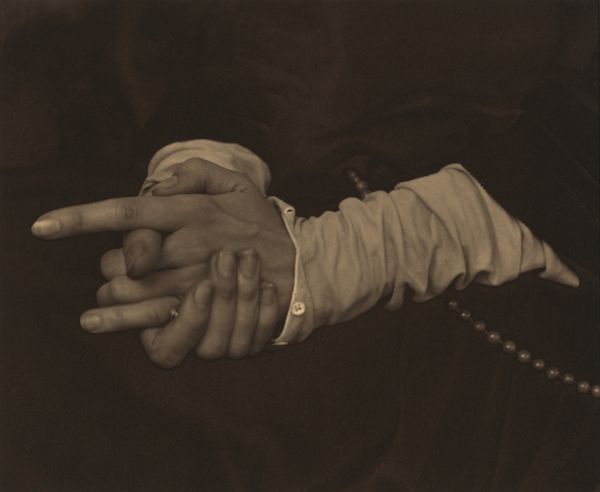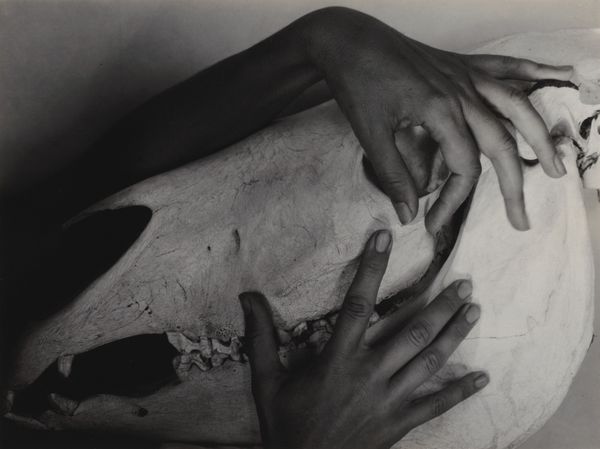
photography
#
portrait
#
pictorialism
#
photography
#
modernism
Dimensions: sheet (trimmed to image): 23.4 × 18.8 cm (9 3/16 × 7 3/8 in.)
Copyright: National Gallery of Art: CC0 1.0
Curator: Alfred Stieglitz's 1922 photograph, "Katharine Dudley", offers us an intimate glimpse into the aesthetic sensibilities of early 20th-century portraiture. Editor: My immediate response is drawn to its subdued tone. There's a softness, almost a vulnerability, emphasized by the hand delicately resting against the subject’s throat. The close crop heightens this sense of intimacy. Curator: Stieglitz was deeply involved in elevating photography to the status of fine art. This portrait reflects his commitment to pictorialism, evident in the soft focus and atmospheric qualities, mimicking painting techniques popular at the time. The photograph’s historical context highlights his contributions to the Photo-Secession movement. Editor: Precisely, the soft focus has interesting effects. On one hand, the woman is centered and illuminated but remains shrouded in an undeniable secrecy, an effect amplified by the clothing choices. A heavily decorated dark and formal garment clashes sharply against the paleness of her skin, a juxtaposition suggesting class difference and possibly female subjugation? Curator: That reading is interesting! Consider too how Stieglitz often photographed women within his circle, and the complexities of their representation. Were these women given agency, or did he objectify them, filtering them through his artistic vision? The portrait sits at the nexus of these complex power dynamics, and, more broadly, how images were shaped by prevailing social structures of gender and class. Editor: Agreed. Looking through a contemporary, feminist lens allows us to critique the potentially controlling gaze inherent in this type of representation. It invites us to consider the voice, or the silenced voice, of the sitter herself. The work certainly exists beyond pure aesthetic form; it holds these conversations within its very visual vocabulary. Curator: These nuances emphasize the portrait's continued relevance. It serves not only as a piece of art historical documentation but also sparks dialogues around social issues that remain pertinent today. Editor: It pushes us to not only view, but actively question, and engage with, art's broader implications.
Comments
No comments
Be the first to comment and join the conversation on the ultimate creative platform.
